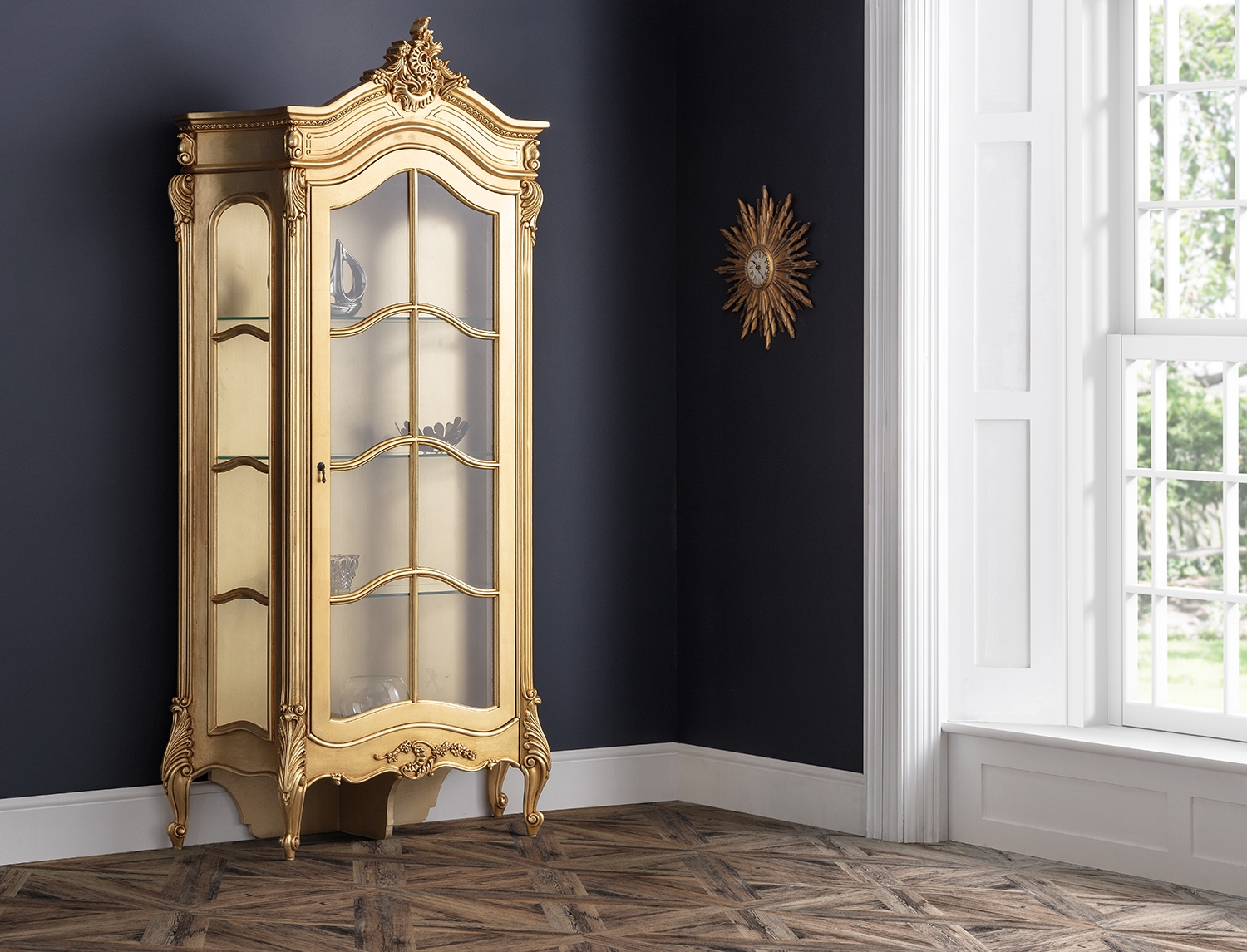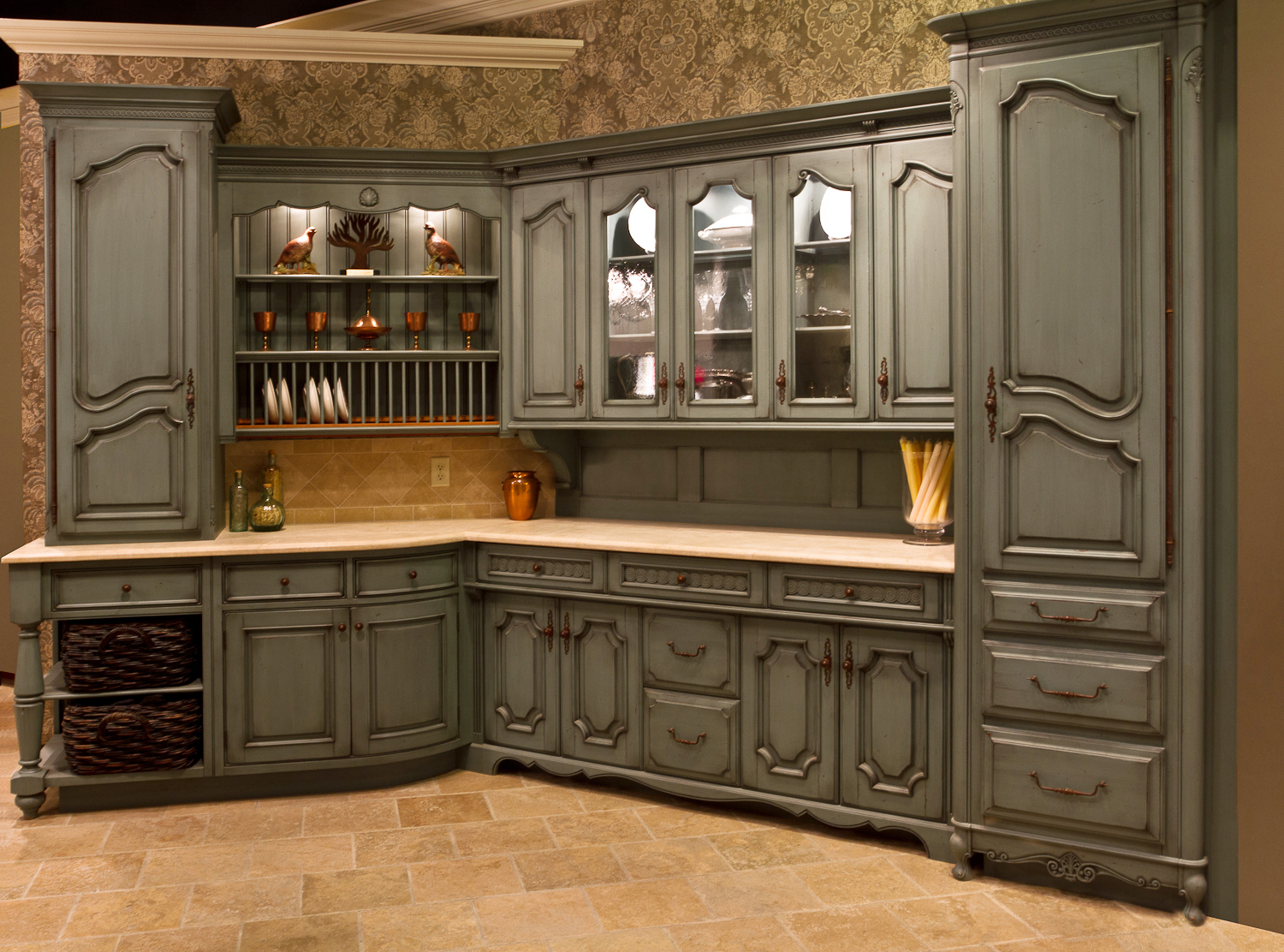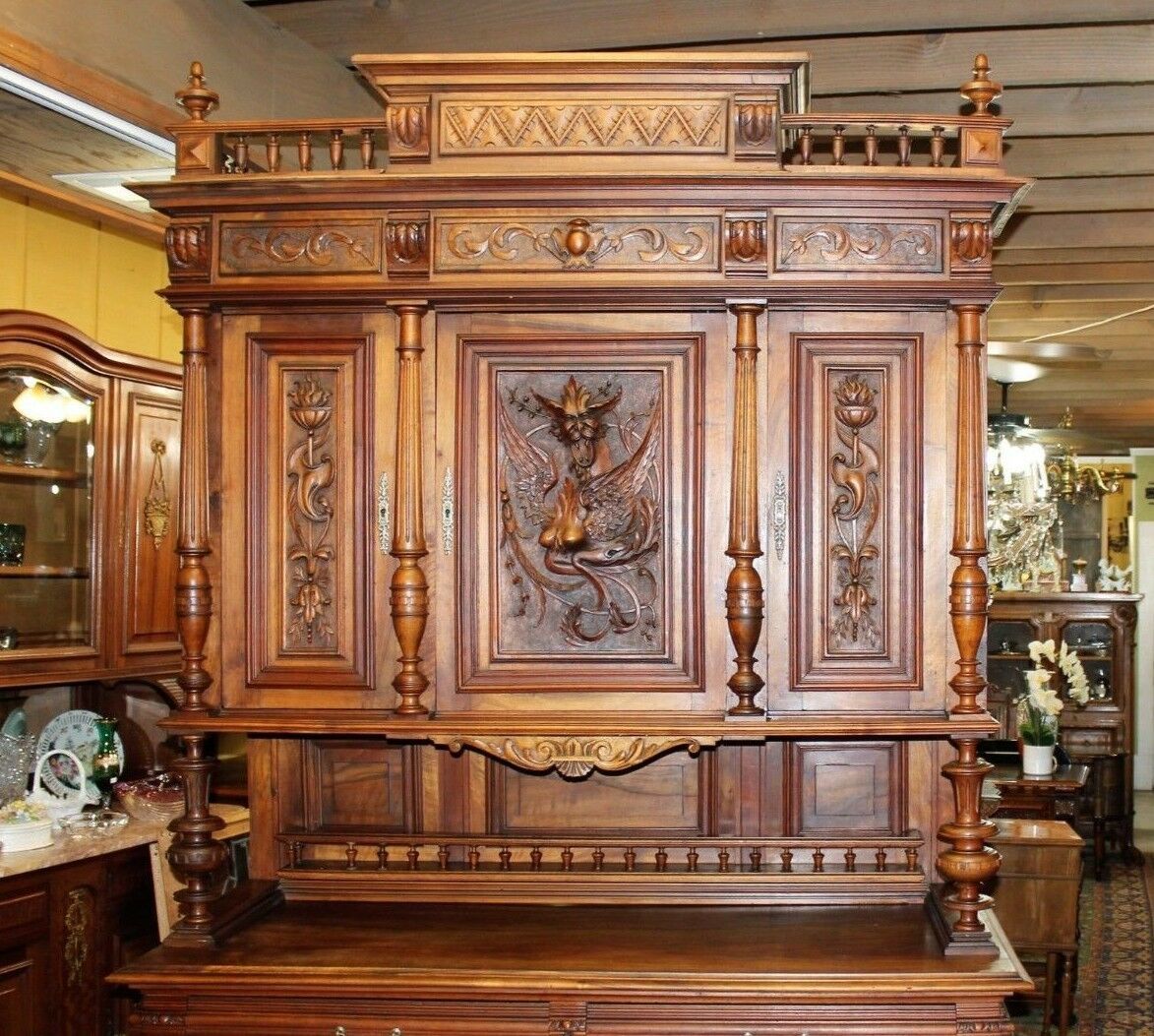History and Evolution of French Style Cabinet Furniture

French cabinet furniture, a testament to artistry and craftsmanship, has captivated the world with its exquisite designs and intricate details. From the opulent grandeur of the Renaissance to the refined elegance of the Neoclassical period, French cabinet furniture has evolved through centuries, reflecting the changing tastes and styles of its time.
The Origins and Early Development
French cabinet furniture emerged in the 16th century, drawing inspiration from the Italian Renaissance. The early pieces were characterized by a blend of Gothic and classical elements, with elaborate carvings, rich inlays, and the use of precious materials like ebony, ivory, and gold. The influence of Italian artists and craftsmen was significant, as they brought their expertise and innovative techniques to the French court.
The Reign of Louis XIV: The Grand Siècle
The reign of Louis XIV (1643-1715), known as the “Sun King,” marked a golden age for French art and design. This period, often referred to as the Grand Siècle, witnessed the development of the Louis XIV style, characterized by its majestic grandeur and opulent ornamentation. Cabinets during this era were massive and imposing, often featuring intricate marquetry, ormolu mounts, and lavish veneers.
“The Louis XIV style is defined by its bold scale, rich materials, and extravagant ornamentation, reflecting the power and prestige of the French monarchy.”
The influence of the royal court was profound. Cabinetmakers, under the patronage of the king and his nobles, produced furniture that reflected the grandeur and extravagance of the court. The use of expensive materials, elaborate carvings, and intricate designs served to reinforce the power and status of the aristocracy.
The Rococo Era: Louis XV and the Age of Elegance
The Louis XV style (1723-1774), a departure from the heavy formality of the Louis XIV era, embraced a lighter, more graceful aesthetic. This period, known as the Rococo, was characterized by its asymmetrical designs, delicate curves, and playful ornamentation. Cabinets became smaller and more intimate, featuring elegant curves, delicate floral motifs, and pastel colors.
“The Louis XV style is characterized by its lightness, grace, and delicate ornamentation, reflecting the shift in taste toward a more refined and intimate aesthetic.”
The Rococo style, with its emphasis on elegance and refinement, was a reflection of the changing social and cultural landscape. The aristocracy, seeking a more intimate and relaxed atmosphere, embraced the lighter and more whimsical designs of the Rococo.
The Neoclassical Revival: Louis XVI and the Return to Order
The Louis XVI style (1774-1793), a reaction to the excesses of the Rococo, emphasized order, symmetry, and classical simplicity. Inspired by the rediscovery of ancient Greek and Roman art, this style featured straight lines, geometric forms, and restrained ornamentation. Cabinets during this period were characterized by their elegant proportions, delicate inlays, and the use of light-colored woods like mahogany and satinwood.
“The Louis XVI style is defined by its classical simplicity, geometric forms, and restrained ornamentation, reflecting the return to order and reason.”
The Neoclassical movement, with its emphasis on reason and order, resonated with the intellectual and political climate of the time. The French Revolution, with its emphasis on republican ideals, further fueled the popularity of the Louis XVI style, as it embodied the values of simplicity and restraint.
The Influence of Artistic Movements
French cabinet furniture was not only influenced by royal patronage and changing social trends but also by artistic movements of the time. The Renaissance, Baroque, Rococo, and Neoclassical movements all had a profound impact on design. These movements, with their distinct aesthetic principles and philosophies, shaped the evolution of French cabinet furniture, from the elaborate carvings of the Renaissance to the elegant simplicity of the Neoclassical period.
Distinctive Features of French Style Cabinet Furniture

French cabinet furniture is renowned for its elegance, craftsmanship, and artistry. It embodies a rich history and cultural heritage, reflecting the evolution of style and taste over centuries. From the intricate carvings of the Louis XIV era to the delicate Rococo designs of the 18th century, French cabinets have consistently pushed the boundaries of design and innovation.
Materials and Craftsmanship
French cabinetmakers have always sought the finest materials to create their masterpieces. Wood, particularly oak, walnut, and cherry, was prized for its durability and beauty. The use of marble, often in the form of elaborate inlays or decorative elements, added a touch of grandeur and sophistication. Metalwork, including bronze, brass, and silver, was also incorporated for accents, hardware, and decorative details.
The meticulous craftsmanship and attention to detail that characterize French cabinet furniture are evident in every aspect of its construction.
Decorative Elements, French style cabinet furniture
French cabinets are adorned with a wide range of decorative elements, reflecting the prevailing styles of each era. Carvings, inlays, and gilding are among the most prominent features.
- Carvings: From the bold, geometric motifs of the Louis XIV period to the more delicate floral and scrollwork designs of the Rococo era, carvings played a significant role in enhancing the aesthetic appeal of French cabinets. These intricate details were often executed by skilled artisans who brought their artistry to life in the wood.
- Inlays: Inlay techniques, using materials such as wood, ivory, bone, and metal, were used to create intricate patterns and designs on the surfaces of cabinets. These decorative elements added depth, texture, and visual interest, highlighting the craftsmanship of the cabinetmakers.
- Gilding: The application of gold leaf, or gilding, was a common practice in French cabinetmaking, particularly during the Louis XIV and Louis XV periods. This technique added a touch of luxury and opulence, enhancing the grandeur of the furniture.
Role of Craftsmanship and Artistry
Craftsmanship and artistry played a pivotal role in the creation of French cabinet furniture. Cabinetmakers were highly skilled artisans who combined technical expertise with artistic vision. They worked closely with designers and decorators to ensure that each piece was a testament to their skill and creativity.
The intricate carvings, inlays, and gilding that adorn French cabinets are not mere embellishments but rather expressions of the artistry and craftsmanship that defined the French tradition of cabinetmaking.
Popular French Cabinet Furniture Styles

The history of French cabinet furniture is a tapestry woven with diverse styles, each reflecting a distinct era and aesthetic. These styles, often named after reigning monarchs, evolved through the interplay of artistic influences, technological advancements, and societal shifts.
French Cabinet Furniture Styles
French cabinet furniture styles are known for their intricate details, luxurious materials, and elegant designs. Here are some of the most popular styles:
| Style | Distinctive Features | Materials | Decorative Elements |
|---|---|---|---|
| Louis XIV | Grandiose scale, elaborate ornamentation, symmetrical design, heavy use of marquetry | Walnut, oak, ebony, ivory, bronze, ormolu | Scrollwork, floral motifs, mythological figures, royal emblems |
| Louis XV | Curved lines, asymmetrical designs, emphasis on comfort and elegance, use of rocaille and shell motifs | Mahogany, rosewood, walnut, gilt bronze | Rocaille, shells, scrolls, flowers, chinoiserie |
| Louis XVI | Simple and refined designs, emphasis on classical forms, use of neoclassical motifs | Mahogany, oak, satinwood, gilt bronze | Ovals, wreaths, urns, medallions, laurel leaves |
| Empire | Inspired by ancient Roman and Greek architecture, use of bold and dramatic designs, emphasis on military themes | Mahogany, rosewood, bronze, marble | Sphinxes, eagles, laurel wreaths, Roman motifs |
| Art Deco | Geometric shapes, bold colors, use of exotic materials, emphasis on functionality and modernism | Ebony, rosewood, chrome, glass, lacquer | Geometric patterns, stylized flora and fauna, sunbursts, zigzags |
French style cabinet furniture is known for its elegant curves and intricate details. While this style often features ornate hardware, you can also find a more minimalist approach with mission style kitchen cabinet hardware. This hardware, with its clean lines and simple design, adds a touch of rustic charm to French-inspired cabinets, creating a beautiful balance of traditional and modern styles.
French style cabinet furniture is known for its elegance and intricate details, often featuring ornate carvings and delicate finishes. If you’re looking for a more rustic and charming aesthetic, consider a farmhouse style curio cabinet. These cabinets offer a blend of practicality and farmhouse charm, with open shelves and glass doors to display your favorite treasures.
While they may not possess the same elaborate ornamentation as their French counterparts, farmhouse cabinets bring a warm and inviting feel to any space.
